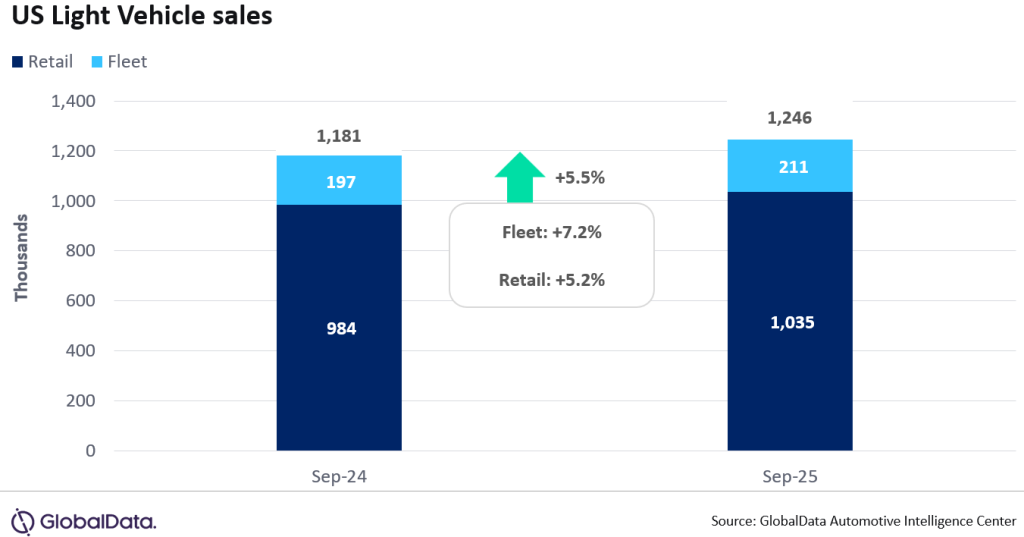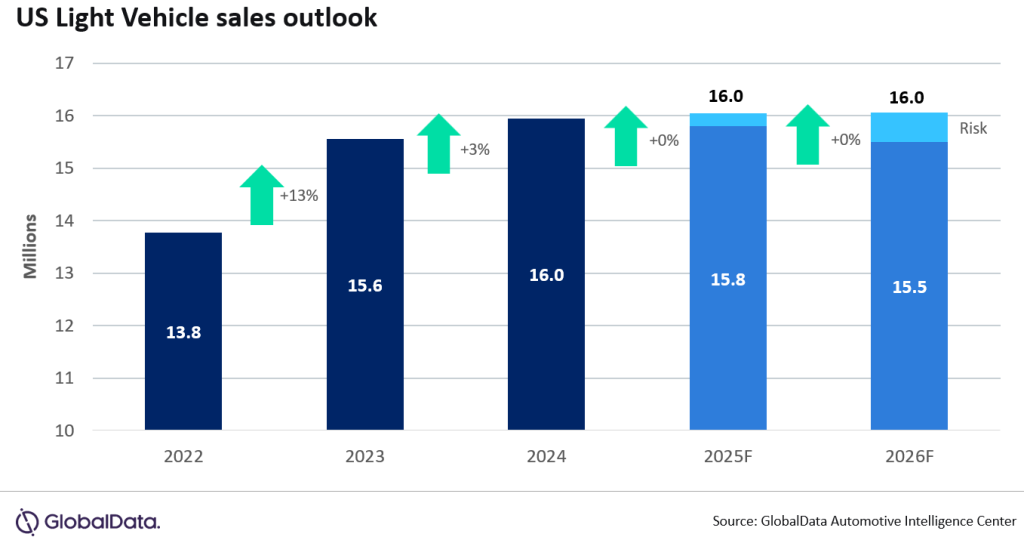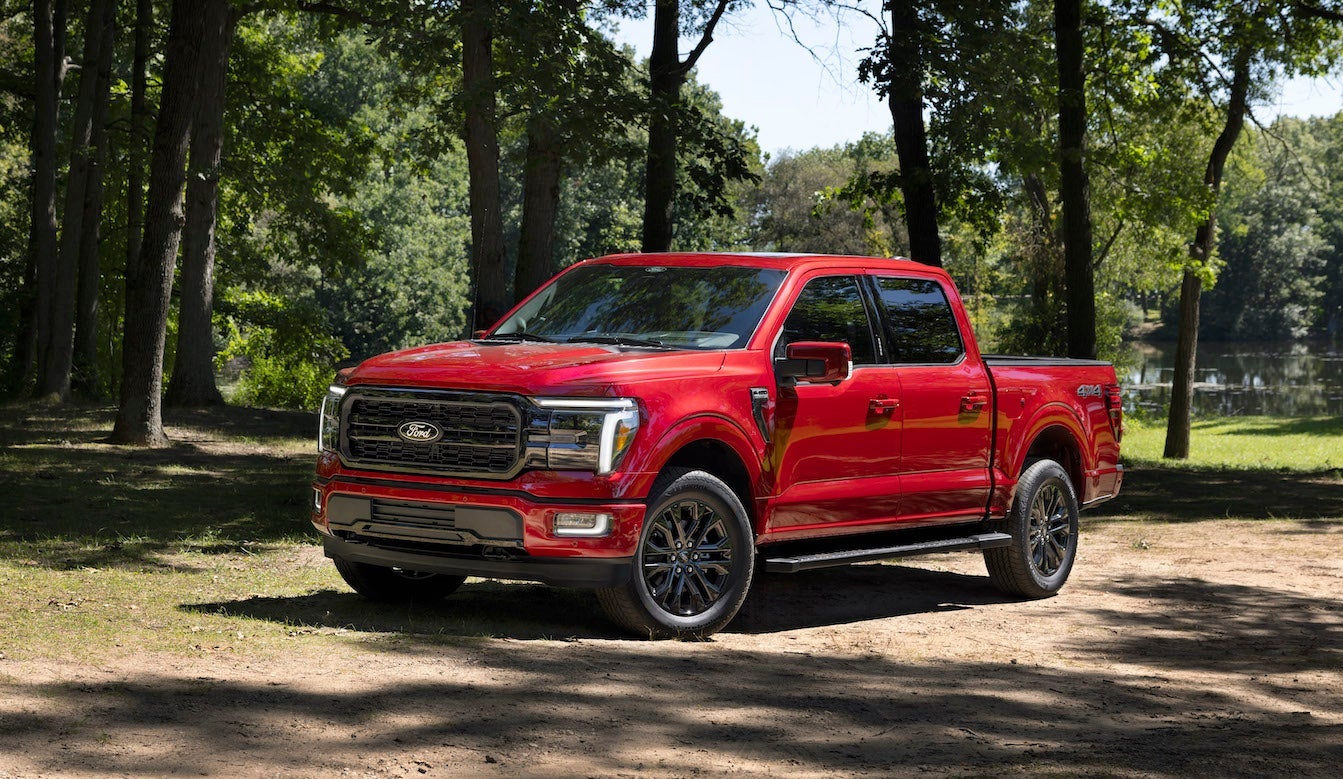According to preliminary estimates, US Light Vehicle (LV) sales grew by 5.5% year-on-year (YoY) in September, to 1.25 million units. September 2025 had one additional selling day compared with September 2024, meaning that sales were up by 1.1% YoY on a selling day-adjusted basis.

The daily selling rate was measured at 51.9k units/day in September, down from 54.6k units/day in August. The annualized selling rate was estimated at 16.4 million units/year in September, up from 16.1 million units/year in August. Retail sales were estimated at 1.03 million units, up by 5.2% YoY, while fleet sales were thought to total 211k units, up by 7.2% YoY.

GM once again led the market, with total sales of 219k units, and a market share of 17.6%, its highest share since April. Toyota Group ranked second, with volumes of 186k units, but its market share was only 14.9%, the OEM’s lowest since March. Ford Group came in third, with sales of 160k units, and a share of 12.9%. The most unexpected result in September, however, was that Stellantis recorded its highest market share since June 2024, at 8.9%, and it was the first time that Stellantis had beaten Honda Group since that same month. A higher fleet share than is normal for several Stellantis brands appeared to partly explain this performance.
At a brand level, Toyota topped the rankings, on 159k units, ahead of Ford on 153k units and Chevrolet on 139k units.
The Ford F-150 returned to the top of the sales rankings in September, on 38.9k units, after having been usurped by the Toyota RAV4 in August. The F-150’s sales were disrupted by a recall in August, but did not appear to be too badly hindered in September. The RAV4 came in second, on 36.6k units, followed by the Chevrolet Equinox, on 31.4k units. The Equinox appeared to be boosted by sales of its EV variant, as buyers took advantage of EV tax credits before they expired.
According to initial estimates, Compact Non-Premium SUV was once again the bestselling segment, with a market share of 22.0%, a six-month high. Strong showings from the Hyundai Tucson and Hyundai IONIQ 5 helped to drive this performance. On the other hand, Midsize Non-Premium SUV saw its share slip to 16.3%, its lowest of Q3, as share for the Hyundai Palisade and Honda Prologue eased back from recent highs. In the case of the Prologue, a lack of inventory reportedly restricted the model from posting higher volumes. Meanwhile, the Large Pickup segment accounted for 14.0% of the market in September. Ram’s trucks recorded their highest market share of the year to date, but it remains to be seen whether this performance can be sustained.

US Tariffs are shifting - will you react or anticipate?
Don’t let policy changes catch you off guard. Stay proactive with real-time data and expert analysis.
By GlobalDataDavid Oakley, Manager, Americas Sales Forecasts, GlobalData, said: “September rounded out Q3 with another strong result, continuing the recent theme of resilience in the face of upheaval in the industry. The removal of tax credits at the end of the month likely pulled forward sales of EVs, but the wider story is that even models of other propulsion types are performing much more robustly than would have been expected earlier in the year, given the backdrop of tariffs. There has still been very little movement in pricing, and incentives also remain steady, providing the environment for sales to continue flowing. Most automakers appear still to be doing their utmost to absorb cost pressures, and some have indicated a willingness to extend offers into October to cushion the blow from the lack of EV tax credits. The longer that consumers can be persuaded that price increases are imminent, the more motivation there will be to buy now, while a stock market near all-time highs is also helping to support activity. The big question now is whether Q4 will lead to a sharp drop in sales, or whether there will be a more gradual easing in selling rates. Some kind of slowdown still seems likely, but the final quarter of the year begins with more momentum than seemed probable just a few months ago”.

With nine months of the year now passed, the outlook for 2025 is looking more robust than expected at any point since tariffs became a reality. We remain of the view that there will be a slowdown in selling rates in Q4, but this now appears likely to be more modest than previously thought, and the market is entering Q4 on a stronger footing than expected. In fact, there is now a good chance that Light Vehicle sales will grow YoY, and we have revised up our full-year forecast to 16.0 million units. This would represent a YoY gain of around 0.4%, and would also mark the first time that the 16.0 million unit mark has been surpassed since 2019. There are risks on both sides of the forecast, and much is hanging on the extent to which OEMs can continue to keep pricing in check, in a market in which affordability is still a major concern.
This article was first published on GlobalData’s dedicated research platform, the Automotive Intelligence Center.





